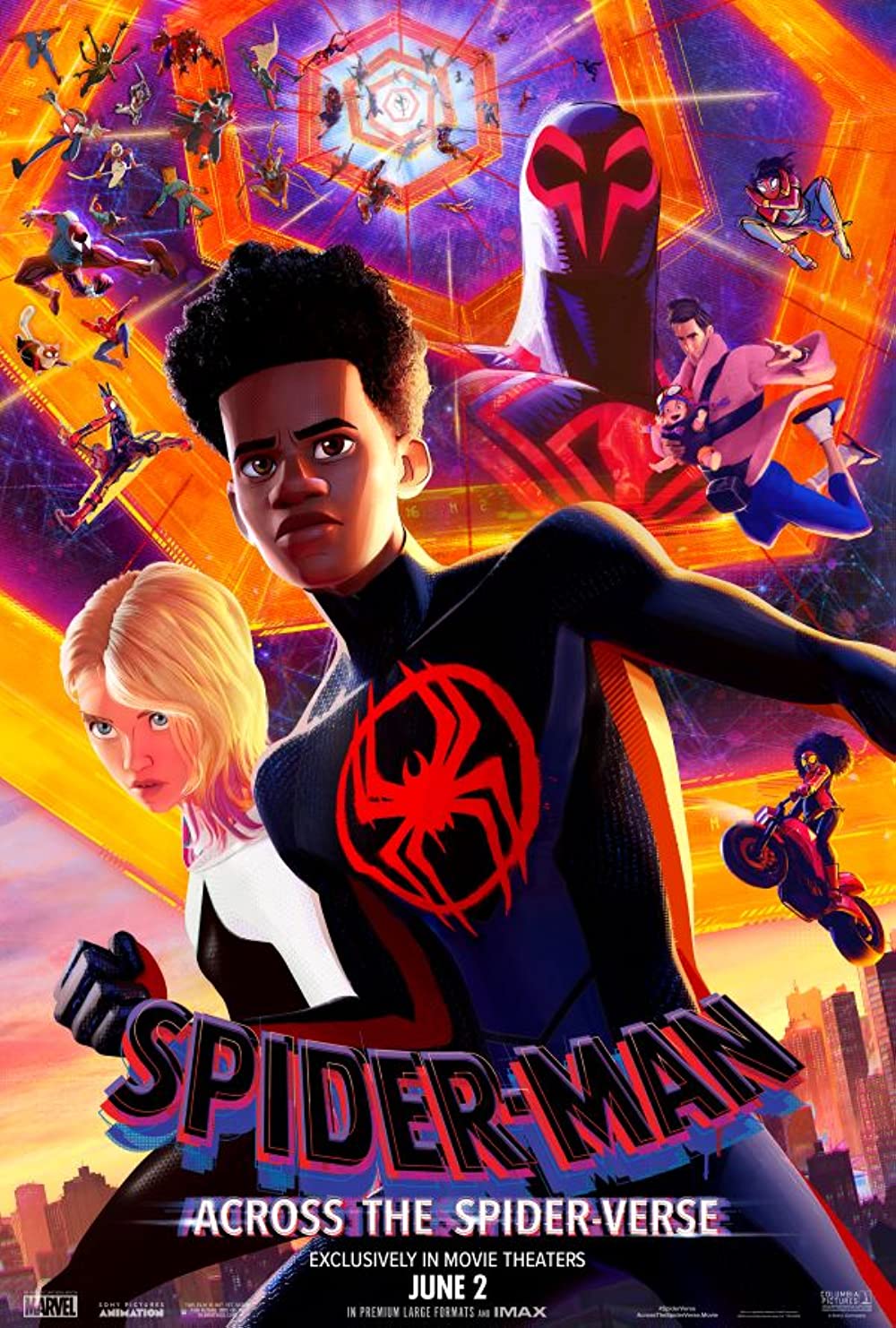When traversing through the world of Disney and Pixar, one can observe the hallmarks and staples of contemporary American animation; a blend of hyperrealism and just enough cartoonish elements to project a three dimensional fantasy. This formula has proven its effectiveness with hits like Disney’s “Frozen 2” and Pixar’s “Toy Story 4.” However, the algorithmic aesthetic of this animation style has become a bit exhausted leaving avid movie fans wanting more.
Surging back onto the scene, the newest addition to the “Spider-Man” franchise once again redefines what it means to be an animated movie. Theatrically released as of June 2, Sony Pictures’ “Spider-Man: Across the Spider-Verse” performs electrically, enhanced in every way from its 2018 iteration, “Spider-Man: Into the Spider-Verse.” With its trademark impetus of its comic book aesthetic, the story’s darker and grittier tone and theme allows not only for the stellar animation and artistry to shine, but also its drama to be powerfully compelling.
The narrative of the new “Spider-Man” movie is beautifully complicated, tackling the timeless tale of the relationship between power and responsibility presented as a coming-of-age film. Voiced by Hailee Steinfield, Gwen Stacy is instantly established as a central character: the Spider-Woman of her universe. Her story intertwines with Miles, voiced by Shameik Moore, as they share their struggles in keeping their identities from their parents and balancing their day to day lives while fighting crime as adolescent heroes. She also wrestles with her strict cop father, creating a linkage with Miles Morale’s narrative insofar as he has his own overbearing police captain dad.
It is then unfortunate as her narrative arc loses its spotlight when the story shifts to its multiversal plot line. While the film does this to advance its more mature motifs, it comes at the cost of how the first film captured its more grounded and personal conflicts. However, through it all, Gwen’s character is pushed forward as she takes a strong and forthright approach to being Miles’ love interest.
The theme of “taking control of your story” is imbued upon Miles’ storyline compellingly. Early in the film, his school guidance counselor attempts to reshape his narrative as a prodigy that ascended despite his marginalized background for college applications. This would further be mirrored in his conflicts with the brooding, adult Spider-Man, Miguel O’Hara, voiced by a serious Oscar Isaac, who tells Miles that his story, as a Spider-Man, has already been tragically laid out. The story of “Spider-Man: Across the Spider-Verse,” then, transforms itself into a sensational, striking coming-of-age, hinging on Miles’ and Gwen’s indomitable, free and young will to challenge the jaded, adult Spider-People.
What truly drives the show and the absolute highlight of “Spider-Man: Across the Spider-Verse” is its dazzling animation. The film shares the same aesthetic, with the philosophy of treating its animation as if it is a moving comic. This pays homage to its origin in source material, while also developing its unique style with dotted imagery, contrasting bright colors and rapidly jazzy transitions.
As “Spider-Man: Into the Spider-Verse” broke out every aesthetic norm of its animated counterparts, “Spider-Man: Across the Spider-Verse” reinvents the tradition by concentrating its vivid and imaginative energy into the individual characters.
Vibrant visuals and dizzying art is exuded between every individual Spider-Man and Spider-Woman and their fighting styles. Where Miles’ creativity and impromptu acrobatics are met with splashing and free flowing artistic spirit, Gwen’s graceful and flying web slinging contrasts her partner. And both of the protagonists clash with the intimidatingly, physical brute force behind Miguel’s Spider-Man. Every personality shines uniquely, embodying the narrative’s distinctly crafted characters by giving them their own respective, rhythmic visual portrayals. And with that, “Spider-Man: Across the Spider-Verse” again ambitiously reaches to push the limits on the American animation industry.
With all these amazing qualities, what the film unfortunately lacks is a cohesive soundtrack. Feeling as though the narrative seems hinged at large on its visuals, “Spider-Man: Across the Spider-Verse” sports only a few original songs. Where “Sunflower” and “Scared of the Dark” kept a consistent flow within the emotions of Miles’ hero journey, the soundtrack for the newest “Spider-Man” film often feels shallow and one-noted, especially when presented at each character’s highest and lowest moments.
Verdict: No animated movie fan can afford to miss “Spider-Man: Across the Spider-Verse,” a bombastically exhilarating sequel that ups the ante for American Animation. Despite a step back with its soundtrack, “Spider-Man: Across the Spider-Verse” jumps leaps and bounds with its animation and compelling narrative.








